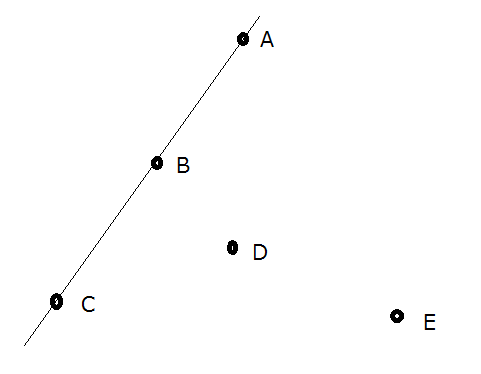Score : 700 points
Problem Statement
You are given N points (x_i,y_i) located on a two-dimensional plane. Consider a subset S of the N points that forms a convex polygon. Here, we say a set of points S forms a convex polygon when there exists a convex polygon with a positive area that has the same set of vertices as S. All the interior angles of the polygon must be strictly less than 180°.

For example, in the figure above, {A,C,E} and {B,D,E} form convex polygons; {A,C,D,E}, {A,B,C,E}, {A,B,C}, {D,E} and {} do not.
For a given set S, let n be the number of the points among the N points that are inside the convex hull of S (including the boundary and vertices). Then, we will define the score of S as 2^{n-|S|}.
Compute the scores of all possible sets S that form convex polygons, and find the sum of all those scores.
However, since the sum can be extremely large, print the sum modulo 998244353.
Constraints
- 1≤N≤200
- 0≤x_i,y_i<10^4 (1≤i≤N)
- If i≠j, x_i≠x_j or y_i≠y_j.
- x_i and y_i are integers.
Input
The input is given from Standard Input in the following format:
N x_1 y_1 x_2 y_2 : x_N y_N
Output
Print the sum of all the scores modulo 998244353.
Sample Input 1
4 0 0 0 1 1 0 1 1
Sample Output 1
5
We have five possible sets as S, four sets that form triangles and one set that forms a square. Each of them has a score of 2^0=1, so the answer is 5.
Sample Input 2
5 0 0 0 1 0 2 0 3 1 1
Sample Output 2
11
We have three "triangles" with a score of 1 each, two "triangles" with a score of 2 each, and one "triangle" with a score of 4. Thus, the answer is 11.
Sample Input 3
1 3141 2718
Sample Output 3
0
There are no possible set as S, so the answer is 0.